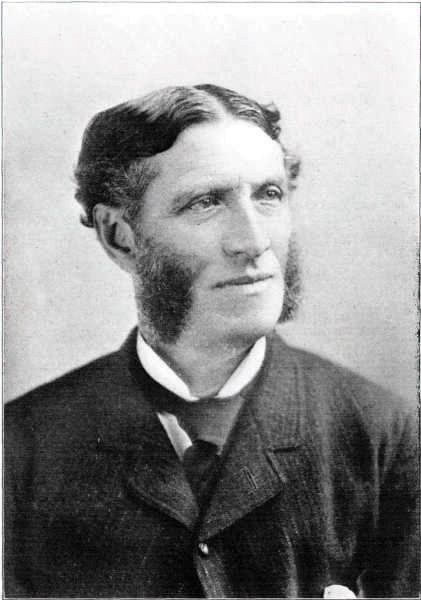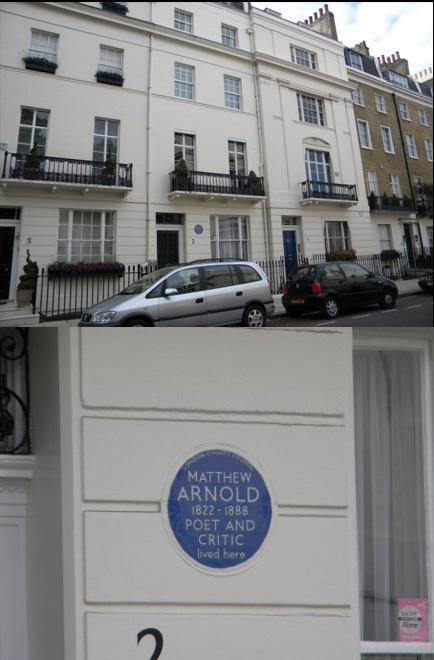This is “Matthew Arnold (1822–1888)”, section 7.7 from the book British Literature Through History (v. 0.1). For details on it (including licensing), click here.
For more information on the source of this book, or why it is available for free, please see the project's home page. You can browse or download additional books there. To download a .zip file containing this book to use offline, simply click here.
7.7 Matthew Arnold (1822–1888)
PLEASE NOTE: This book is currently in draft form; material is not final.
Learning Objectives
- Characterize “Dover Beach” as a dramatic monologue.
- Relate “Dover Beach” to the Victorian conflict of faith and doubt.
- Evaluate the role of nature in “Dover Beach.”
Biography

From a family of educators, Matthew Arnold was well educated and widely read even before he won a scholarship to Balliol College, Oxford University. For a time, his family lived in the Lake District, where Arnold met William Wordsworth. Arnold worked as a teacher, a fellow at Oriel College Oxford, a school inspector, and finally Professor of Poetry at Oxford. His poetry includes Thyrsis, an elegy to his friend Arthur Clough, considered along with Milton’s Lycidas, Shelley’s Adonais, and Tennyson’s In Memoriam to be the great pastoral elegies of British literature. Other of Arnold’s major poems include “The Scholar Gipsy,” “Tristram and Iseult,” and “Sohrab and Rustum.”

In addition to his poetry, Arnold wrote prose works addressing literature (Essays in Criticism), cultural and class issues (Culture and Anarchy) and religious issues (Literature and Dogma) in Victorian England. Throughout much of the 20th century, the reputation of Arnold’s prose works overshadowed that of his poetry.
Text
- “Dover Beach.” rpt. in Edmund Clarence Stedman. ed. A Victorian Anthology, 1837–1895. Bartleby.com.
- “Dover Beach.” The Victorian Web. Dr. George Landow, Brown University.
“Dover Beach”
The sea is calm to-night.
The tide is full, the moon lies fair
Upon the straits; on the French coast the light
Gleams and is gone; the cliffs of England stand;
Glimmering and vast, out in the tranquil bay.
Come to the window, sweet is the night-air!
Only, from the long line of spray
Where the sea meets the moon-blanched land,
Listen! you hear the grating roar
Of pebbles which the waves draw back, and fling,
At their return, up the high strand,
Begin, and cease, and then again begin,
With tremulous cadence slow, and bring
The eternal note of sadness in.
Sophocles long ago
Heard it on the Aegean, and it brought
Into his mind the turbid ebb and flow
Of human misery; we
Find also in the sound a thought,
Hearing it by this distant northern sea.
The Sea of Faith
Was once, too, at the full, and round earth’s shore
Lay like the folds of a bright girdle furled.
But now I only hear
Its melancholy, long, withdrawing roar,
Retreating, to the breath
Of the night-wind, down the vast edges drear
And naked shingles of the world.
Ah, love, let us be true
To one another! for the world, which seems
To lie before us like a land of dreams,
So various, so beautiful, so new,
Hath really neither joy, nor love, nor light,
Nor certitude, nor peace, nor help for pain;
And we are here as on a darkling plain
Swept with confused alarms of struggle and flight,
Where ignorant armies clash by night.
Video Clip 4
Matthew Arnold’s “Dover Beach”
(click to see video)View a video mini-lecture on Matthew Arnold’s “Dover Beach.”
Key Takeaways
- Arnold’s “Dover Beach” is an example of a dramatic monologue.
- “Dover Beach” addresses the Victorian conflict of faith and doubt.
Exercises
- Matthew Arnold’s “Dover Beach” uses a pattern familiar in the Romantic poetry of the earlier 19th century, an observation of nature which leads to a meditation. Describe the natural phenomenon that Arnold sees and hears in lines 1 through 14.
- Lines 15 through 20 serve as a transition into the meditation. Of what do the sights and sounds of nature make him think?
- Lines 21 through 28 contain the meditation, including Arnold’s famous metaphor of the “sea of faith.” What is the “sea of faith” and what is happening to it?
- How does Arnold describe the world in lines 29 through 37? What metaphor does he use to picture the state of the world?
-
“Dover Beach” is a dramatic monologue. Analyze the poem as a dramatic monologue by identifying the four characteristics of dramatic monologues:
- a fictional speaker
- a speech made at a dramatic moment in the speaker’s life
- a silent but identifiable listener
- a revelation of the speaker’s character
Resources
Biography
- “Matthew Arnold.” Academy of American Poets. Poets.org.
- “Matthew Arnold: A Biography.” rpt. from British Authors of the Nineteenth Century. Ed. Stanley Kunitz. New York: H.W. Wilson, 1936. 16–18. The Victorian Web.
- “Matthew Arnold: A Chronology.” The Victorian Web. Dr. George Landow, Brown University.
Text
- “Dover Beach.” rpt. in Edmund Clarence Stedman. ed. A Victorian Anthology, 1837–1895. Bartleby.com.
- “Dover Beach.” The Victorian Web. Dr. George Landow, Brown University.
Audio
- “Dover Beach.” LibriVox.
Video
- “Matthew Arnold’s Dover Beach.” Dr. Carol A. Lowe, McLennan Community College.




